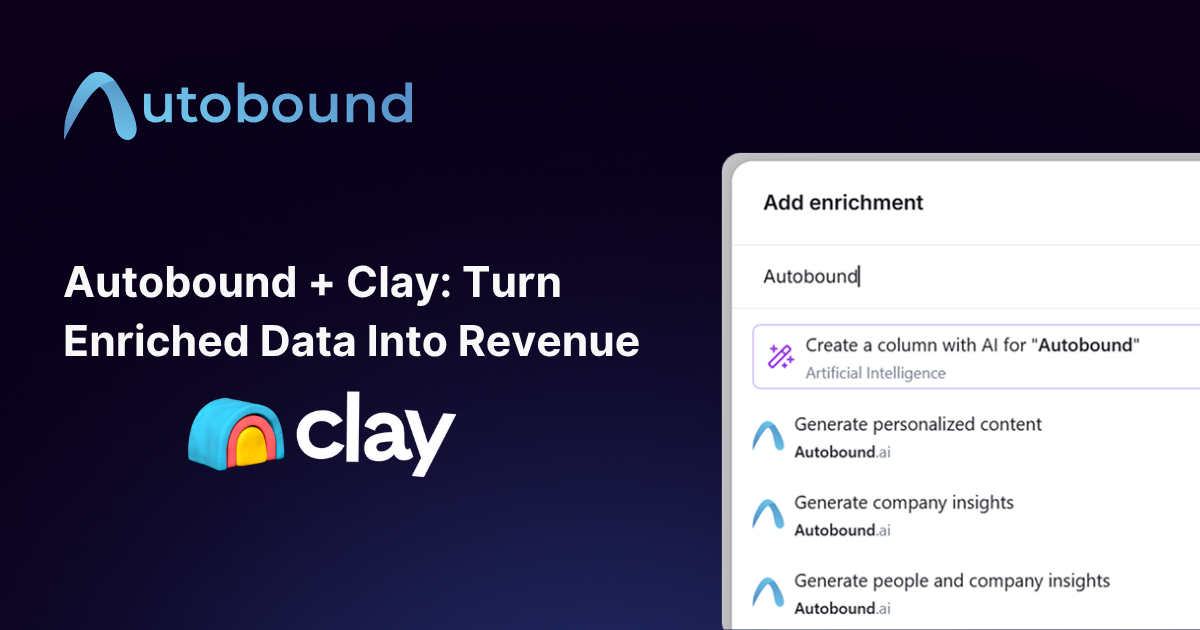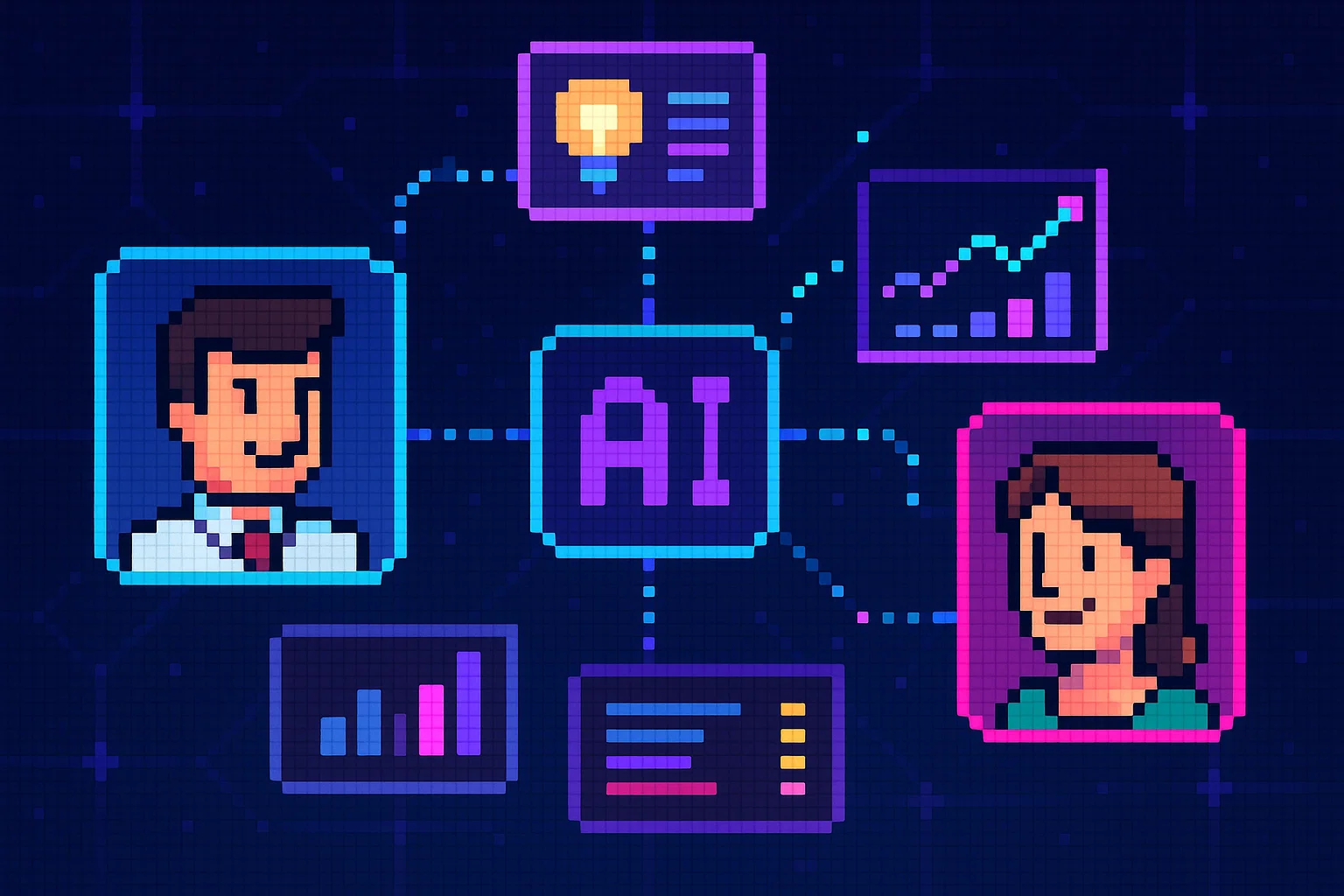Introduction: The Age of the Informed Buyer (and Why It Matters)
Remember the good old days when salespeople were like intrepid explorers, venturing into a vast jungle of potential leads, armed with nothing but a phone and a dream? Those days are gone, my friend. Today's B2B buyer is less Indiana Jones and more Sherlock Holmes, meticulously researching their options online before they even think about engaging with a salesperson. They're reading industry reports, comparing solutions on review sites, and downloading more white papers than you can shake a stick at (The B2B Buying Journey: Key Stages and How to Optimize Them | Gartner).
This shift to a more informed buyer presents both a challenge and an opportunity. The challenge? You can't just rely on brute force outreach anymore. The opportunity? By understanding how today's B2B buyers operate, you can align your sales and marketing efforts to connect with them precisely when they're most receptive to your message. It's like setting a trap for a particularly discerning mouse—you need to know what they're looking for and lay the bait accordingly.
This guide will equip you with the knowledge and tactics to become a master of B2B buyer intent, transforming you from a lost explorer into a strategic sharpshooter. Get ready to ditch the cold calls and embrace a more targeted, data-driven approach that yields higher conversion rates and stronger customer relationships.
Understanding the Modern B2B Buying Journey
The traditional sales funnel, with its neat and tidy stages of awareness, consideration, and decision, has gone the way of the dinosaurs. Today's B2B buying journey is more like a choose-your-own-adventure novel, with multiple touchpoints, detours, and characters influencing the plot (The B2B Buying Journey: Key Stages and How to Optimize Them | Gartner).
Think about it: a single purchase decision might involve a head of IT, a CFO, a marketing manager, and even the CEO, each with their own set of priorities and information sources. And let's not forget the rise of the "self-serve" buyer, who'd rather spend hours researching solutions online than talk to a salesperson. In fact, Gartner predicts that a whopping 80% of B2B sales interactions will be digital-only by 2025 (The Future of Sales: Digital First Sales Transformation Strategies | Gartner). That means your website, content, and online presence are more important than ever.
To succeed in this new landscape, you need to understand the key players, their motivations, and the information they consume at each stage of the journey. It's like piecing together a puzzle—the more pieces you have, the clearer the picture becomes.
Decoding B2B Buying Signals: The Telltale Signs of Intent
Imagine you're a detective investigating a crime. You wouldn't just barge into a suspect's house without gathering clues first, would you? The same principle applies to B2B sales and marketing. Before you reach out to a potential customer, you need to look for buying signals—those digital breadcrumbs that indicate a company is actively researching or considering a purchase.
Here are a few key places to look for those telltale signs:
Digital Footprint: Tracking the Trails They Leave Online
Every click, download, and page view is a clue. By analyzing a prospect's digital footprint, you can gain valuable insights into their interests, pain points, and buying intent. Here are a few key footprints to look for:
- Website Visits: Are they spending an unusual amount of time on your pricing page? Downloading multiple case studies? These actions suggest a strong interest in your solution.
- Content Consumption: The content your prospects consume can reveal a lot about their challenges and priorities. For example, if they're downloading white papers about data security, it's a safe bet that data security is a top concern for them.
- Webinar Registrations & Demo Requests: These actions require a higher level of commitment from the prospect, indicating a strong interest in learning more about your solution.
Company News & Events: Riding the Wave of Change
Big changes within a company often signal big opportunities for savvy B2B marketers. Keep a close eye on these events:
- Funding Announcements: A fresh infusion of capital often means a company is ready to invest in growth, which could include new software, services, or expansion into new markets.
- New Product Launches & Expansions: These events suggest a company is on the move and might need additional resources to support their growth.
- Leadership Changes: A new CEO or VP often brings new priorities and a desire to make their mark, potentially leading to changes in technology, strategy, or vendor relationships.
By monitoring these events, you can identify companies that are primed for growth and position your solution as a way to help them achieve their goals.
Social Media Activity: Listening In on the Conversation
Social media isn't just for cat videos and political rants. It's also a valuable source of B2B buying signals. Pay attention to:
- Engagement with Industry Content: Are they liking, sharing, or commenting on articles related to your industry or solution?
- Mentions of Competitors: Tracking competitor mentions can alert you to potential opportunities where a prospect might be considering switching solutions.
- Employee Posts About Challenges or Needs: Sometimes, employees inadvertently reveal pain points or areas where your solution could provide value.
Intent Data: Tapping into the Collective Research Mindset
Intent data takes the guesswork out of identifying potential buyers. This data, often aggregated from third-party providers, tracks which companies are actively researching specific keywords and topics online. For example, if a company's IP address shows repeated searches for "marketing automation software," it's a strong indication that they're in the market for a solution like yours.
Pro Tip: Not all buying signals are created equal. A CEO tweeting about a competitor's product is a much stronger signal than a junior marketer liking your latest blog post. The key is to prioritize high-intent signals and understand the context behind them.
Putting Intent Data into Action: Practical Strategies for Sales and Marketing
Now that you're a master detective of buying signals, let's translate that knowledge into actionable tactics for your sales and marketing teams.
For Sales Teams: Sharpening the Spear of Outreach
- Prospecting with Precision: Ditch the generic lists and use intent data platforms to build laser-focused lists of accounts actively researching solutions like yours.
- Personalization is King: Imagine receiving an email that references your company's recent funding round or a blog post you shared—that's the power of personalization. Craft hyper-personalized outreach emails that directly address the specific buying signals you've identified.
- Prioritize Your Pipeline: Not all leads are created equal. Rank leads based on intent strength and focus your efforts on those showing the highest buying propensity.
- Sales Enablement: Arm your sales team with the knowledge and resources they need to succeed. Provide them with talk tracks, presentations, and battle cards that align with the pain points and interests revealed by intent data.
For Marketing Teams: Crafting Campaigns That Resonate
- Refine Your Target Audience: Use buying signals to create highly specific buyer personas, informing your content strategy, ad targeting, and channel selection. The more you know about your ideal customer, the better you can tailor your marketing efforts to reach them.
- Content is (Still) King: Develop content that directly addresses the questions, challenges, and interests of prospects at different stages of the buying journey, as revealed by intent data.
- Account-Based Marketing (ABM): Identify key accounts showing high intent and create highly targeted campaigns tailored to their specific needs and pain points. This personalized approach can significantly increase engagement and conversion rates.
- Dynamic Website Experiences: Why show the same website to everyone when you can personalize it based on visitor intent? Use dynamic content to display relevant case studies, testimonials, or product recommendations, guiding prospects towards the information they need most.
Tools and Technologies for Capturing Buying Signals
You're not expected to be a mind reader, deciphering buying signals with your bare hands. Thankfully, a whole suite of tools and technologies can help you capture, analyze, and act on those valuable insights. Here's a quick overview:
- Intent Data Providers: These platforms are like the private investigators of the B2B world, aggregating intent data from across the web to tell you which companies are researching specific topics and solutions. Some popular options include Bombora, 6sense, and Demandbase (Top 5 Intent Data Providers in 2024 - SURFE).
- Website Analytics and Tracking: Tools like Google Analytics and Hotjar provide a wealth of information about how visitors interact with your website, including which pages they visit, what content they download, and how long they stay on each page (15 best website tracking tools to measure traffic, user behavior, and performance).
- Marketing Automation Platforms (MAPs): MAPs like HubSpot and Marketo can track lead behavior, score leads based on engagement, and automate marketing tasks, making it easier to nurture leads and move them through the funnel.
- CRM Systems: Your CRM is your central hub for managing customer relationships, and it can also be a valuable source of buying signals. By tracking sales interactions, lead activity, and customer data, you can identify trends and patterns that indicate buying intent.
- Social Listening Tools: Tools like Hootsuite and Brandwatch allow you to monitor social media for brand mentions, competitor discussions, and industry trends, providing valuable insights into what people are saying about your brand and your industry.
Measuring Success: KPIs and Metrics That Matter
In the world of data-driven marketing and sales, measurement is key. You wouldn't just throw a dart at a dartboard and hope for the best, would you? The same principle applies to your B2B marketing efforts. You need to track the right metrics to determine what's working, what's not, and how you can improve your results.
Here are the essential KPIs to monitor when implementing an intent-based targeting strategy:
- Marketing Qualified Leads (MQLs): Track the number of leads generated from your intent-driven campaigns. These are leads that have shown a genuine interest in your solution and fit your ideal customer profile.
- Sales Qualified Leads (SQLs): Measure how many of those MQLs convert into opportunities based on their displayed intent and engagement levels. These are leads that your sales team has determined are ready for a sales conversation.
- Pipeline Velocity: Analyze how quickly deals progress through your sales cycle when you use intent data for lead prioritization. Are deals closing faster? Are you seeing a higher conversion rate from opportunity to closed-won?
- Conversion Rates: Monitor conversion rates at each stage of the funnel, from initial engagement to closed deals, to identify areas for improvement. Where are you losing leads? How can you optimize your funnel to reduce drop-off?
- Return on Investment (ROI): Ultimately, you want to know if your efforts are paying off. Calculate the overall return on investment for your intent-based marketing and sales initiatives. Are you generating more revenue? Are you seeing a lower cost per acquisition?
Conclusion: The Future of B2B Targeting is Intelligent and Buyer-Centric
The days of spray-and-pray marketing and generic outreach are over. To succeed in today's competitive B2B landscape, you need to embrace a more targeted, buyer-centric approach. By understanding the modern buying journey, decoding buying signals, and leveraging the right tools and technologies, you can align your sales and marketing efforts with the needs of your ideal customers.
As AI and machine learning continue to advance, we can expect even more sophisticated intent data and predictive analytics to emerge, further enhancing our ability to identify and engage with high-potential prospects (Future of Sales 2025: Why B2B Sales Needs to Shift to Data-Driven | Gartner). The future of B2B targeting is intelligent, data-driven, and laser-focused on delivering the right message to the right buyer at the right time.
About Autobound
Autobound's leading AI-powered platform delivers 350+ unique insights for go-to-market teams from financial filings, social media activity, 35 news events, competitor trends, job changes and more. Trusted by 7,000+ companies including TechTarget and validated by 220+ 5-star G2 reviews, we're unlocking hyper-personalization at scale, with native integrations for Salesloft, Outreach, and more. Leverage our developer-friendly API, try our Chrome extension, try our platform free, or contact our team to eliminate guesswork and drive measurable growth →
Built with love in San Francisco, CA




